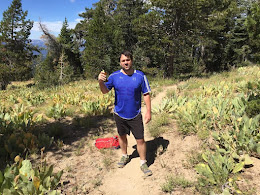- Catastrophic failure. This is the "common sense" idea that limitations of local physiology set the maximum exertion - e.g., oxygen supplied to muscle, muscle fiber recruitment, and metabolite accumulation; and
- The Central Governor model (CGM), where some central regulator sets the limit. This regulator is often assumed to be in the central nervous system, and has been explained either as active limitation of exertion, and also as depletion of neurotransmitters during exercise.
For a more detailed explanation of these models, I refer you to Ament and Verkerke (2009.) They primarily defend the catastrophic failure model, and while they do give a fair shake to CGM, they also have some interesting arguments against it, as well as an excellent reference section (with references to Tim Noakes, probably the best-known proponent of CGM.)
It should be said that nothing in biology is ever simple, so I would agree with Ament and Verkerke that at the very least it's worthwhile distinguishing between slow- and fast-twitch muscle fibers. In pointing that out, they imply but don't really defend the point that BOTH of these models may be correct, i.e., CGM in Type I slow-twitch muscle fiber, and catastrophic failure in Type II fast-twitch. It also seems that CGM proponents like Noakes are mostly interested in slow-twitch (he's an endurance runner) and I'm interested in this model for the same reason.
A bit of circumstantial evidence to bolster the CGM argument, at least for slow-twitch fibers is the phenomenon of claudication. Long story short, claudication is what happens when you have a blockage in a peripheral artery in your leg. Some blood may still be getting through, but not enough - and the problem is revealed with activity, so that when the person tries to run or even walk, they get extreme tiredness, pain and cramping, often in a matter of blocks, and at a very consistent distance. It's basically the peripheral analog to chest pain on exertion (stable angina) though in that case it's because of a blockage in a coronary artery in your heart. In some cases, especially in diabetic people whose circulation is damaged by the disease, skeletal muscle can actually be infarcted - that is, severe damage to muscle cells occurs causing tissue necrosis much like in a myocardial infarction.
If the catastrophic failure model is correct, then athletes pushing themselves and only being limited by peripheral metabolism in their muscles would sometimes infarct their muscles like this, and yet it doesn't happen. If CGM is correct, you would expect that the Governor keeps us out of trouble by keeping us away from the limit - except in people whose vascular systems have undergone rapid pathological deterioration (not just deconditioning), at a rate which perhaps the feedback system to the Governor can't adjust fast enough to take into account. Not only that, the experience of maximal exertion during exercise is not at all like claudication or muscle infarction. (Admittedly I don't have a satisfying mechanism for the peripheral vasculature's feedback to the Governor, but it is very interesting that anatomically nerves and vessels do tend to travel together in bundles.)
The most tempting possible objection to using the lack of claudication or infarction events as support for CGM is to say that catastrophic failure is correct, but the cardiopulmonary system is the constraint that sets maximal exertion, not the peripheral muscle. That is, in a runner, the quads are nowhere near their "theoretical limit" but the heart-lung system is at its maximum (whether it's cardiac output or diffusion-limitation, as occurs in a very few elite athletes.) But this just moves the site of the potential infarction, since now we would be infarcting our hearts instead of our limbs if that's where the limitation is, with no outside governor, and again, this never (or almost never) happens. (A very few elite athletes are diffusion limited, where cardiac output is so great that blood is moving so fast through the lung's capillaries that there's not enough time for oxygen to get into the blood, but this is certainly not the case for the vast majority of humans.)
A second possible objection is to say that catastrophic failure is true because at sustained maximal exertion there IS infarction, e.g., after a marathon, runners sometimes show CK values on the order of 10,000 to 100,000. Yes, but a) CK levels in infarcts from diabetes are actually much lower, in the low thousands; b) chronic mechanical damage to muscles would produce the same effect; c) these runners don't describe acutely feeling part of their quad suddenly dying like an infarct - it's a gradual process, and d) such elevations would happen in acute exercise as well. But they do not.
I suspect that the final correct answer will be that there is a CGM for slow-twitch muscle and not for fast-twitch, and this is why things like neurological changes e.g. after surgery or trauma, placebos, motivation, and anecdotally SSRI use have an effect on endurance sports but not as much in acute strength-and-speed events.
































